21 F. high Monday at MSP International Airport.
26 F. average high on December 19.
28 F. high on December 19, 2015.
December 20, 1989: Minnesotans are hard pressed to find snow cover across most of the state. Only good places to cross country ski are at Grand Marais and along the Gunflint Trail.
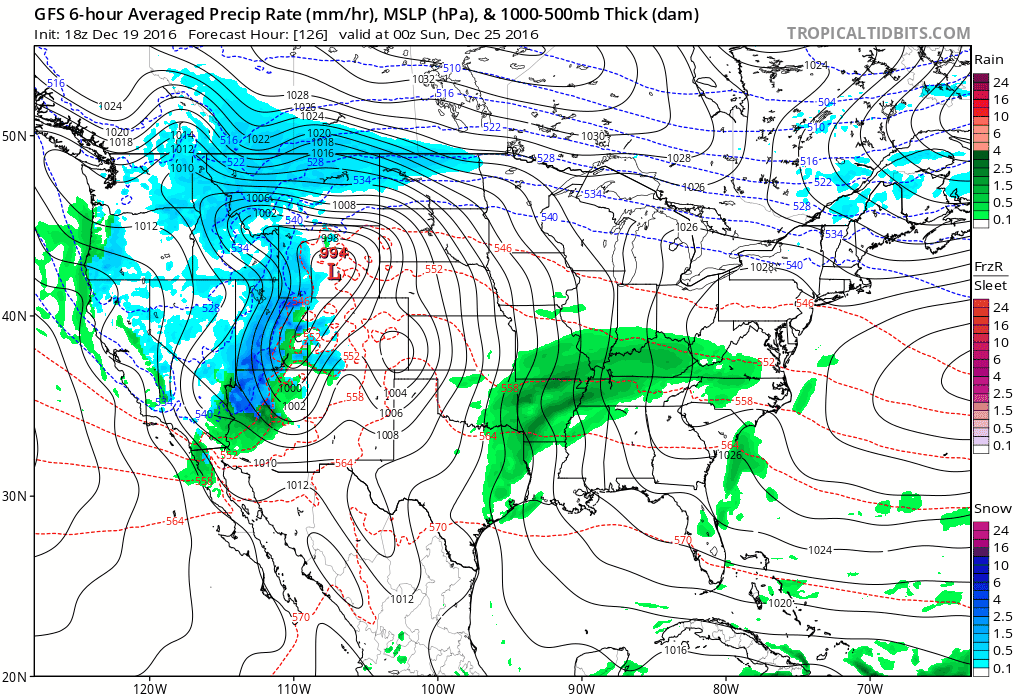
Wild Weather Swings: Rainy Mix Christmas Day?
I'm having a rare "where am I living?" moment. It'll pass. -20F Sunday. One week later the atmosphere could be warm enough for heavy rain. Bizarre weather swings.
I'm having a rare "where am I living?" moment. It'll pass. -20F Sunday. One week later the atmosphere could be warm enough for heavy rain. Bizarre weather swings.
In spite of a string of 30s this week Minnesota will experience the first white Christmas in 3 years. Odds favor the snowiest winter in 3 years as arctic air seeps south with greater regularity. No El Nino to save us this year.
The
"Polar Vortex" is a counterclockwise-spinning gyre of high=altitude
winds howling around a mass of cold, low pressure over the arctic. Think
of it as a balloon: expanding and contracting. A stronger vortex means
high winds are bottling the coldest air to our north. A weaker vortex?
More frequent intrusions of subzero air.
We enjoy a 2-3 week break from face-peeling cold; into at least the first week of January or so. I see flurries Wednesday;
models hinting at a real storm Christmas Day. But enough warm air may
wrap into the circulation for snow, ice, even an extended period of
heavy rain. ECMWF guidance predicts 51F and heavy rain on Christmas Day!
That's OK. I hear Santa has rain-deer.
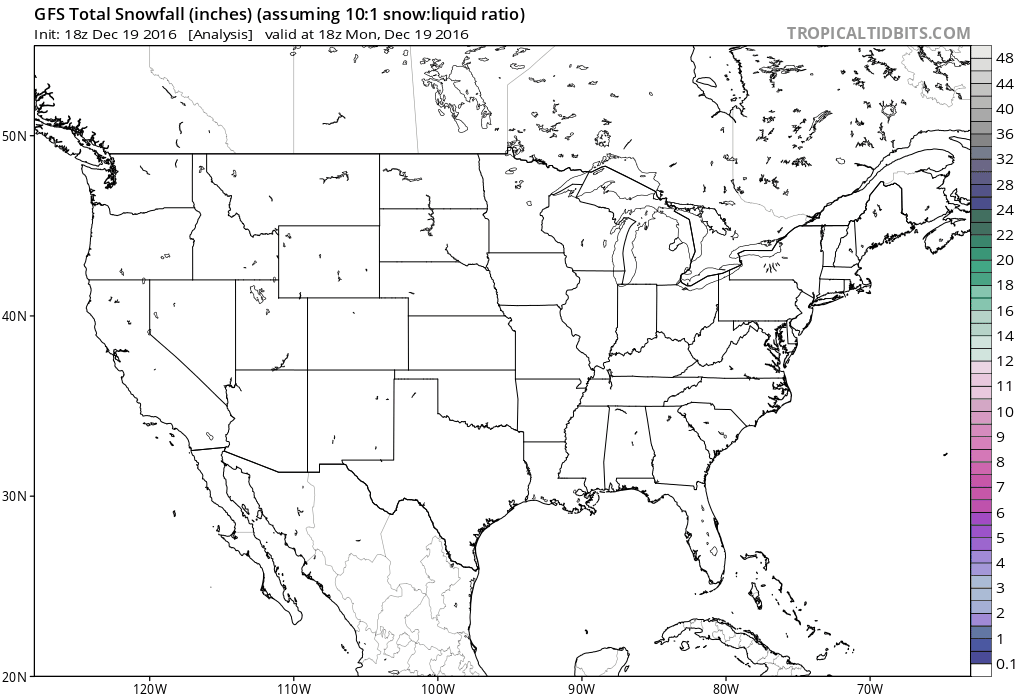
Thaws and Assorted Temperature Spikes.
We should see temperatures above freezing today and Wednesday (it will
feel AMAZING out there!) with relative warmth into Christmas Day, when
ECMWF guidance hints at 50 degrees. With snow on the ground I find that
unlikely, but 40s arent' out of the question Sunday afternoon and night
as a strong storm pulls warmer air into much of Minnesota. Source:
WeatherBell.
Early January: Still Zonal.
GFS guidance shows a relatively moderate, west-to-east zonal wind flow
aloft in early January, with temperatures at or above average for much
of the USA. Cold swipes are likely over the northern tier of the USA,
but not as Arctic as a couple days ago.
5th Warmest November on Record, Worldwide. We're also on track for 2016 to be the warmest year on record, warmer than 2015 and 2014. Here's an excerpt from NOAA NCDC:
- The November temperature across global land and ocean surfaces was 1.31°F above the 20th century average of 55.2°F. This was the fifth highest for November in the 1880–2016 record, 0.41°F cooler than the record warmth of November 2015 when El Niño conditions were strong.
- The November globally averaged land surface temperature was 1.71°F above the 20th century average of 42.6°F. This value was the 12th highest November land global temperature in the 1880–2016 record....

Where Are Forecasts Most Accurate in the USA? Perception becomes reality. I found this to an interesting nugget, courtesy of Peter Kennedy's Daily Devotional: "CNBC
looked at how eight meteorological services predicted temperatures and
rain across the United States. They found the top two overall were
Weather Underground and the Weather Channel with almost an 84% chance of
accuracy. Places like Florida, California and Alaska are easier to
forecast with high accuracy. In California, apps predicted rain (or more
likely, no rain) in some areas with more than 97 percent accuracy in
2015. Likewise, temperature forecasts are strongest in Florida. Overall,
the hardest states to predict the weather in are North Dakota and
Montana, where apps are only right about 64 percent of the time.
Additionally, what is perceived as accurate can change depending on how
you use a service. That's why some weather services have been known to
adjust their predictions to better serve their customers. One famous
example is the "wet bias" — when a forecaster reports a higher
probability of rain than his or her models suggest to help keep people
from getting wet if it does rain. The logic is that if consumers see
that rain is unlikely and get wet, they'll be a lot angrier than if they
see that rain is more likely and it doesn't rain. "Sometimes a less
accurate forecast is perceived as being a better forecast," said Eric
Floehr, the founder of ForecastAdvisor...."
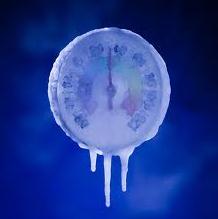
Image credit: "Google Earth's time-lapse videos show see how the planet's surface has changed over time — like the evaporation of the Aral Sea (above)." YouTube/Screenshot by NPR
It's Energy Storage's Time to Shine. Here's an excerpt from a story at Fox Business: "...The inconvenient truth is that until recently, energy storage didn't have any financial justification. The idea of value was there, but there was no actual value to create. Rooftop solar power systems create energy and can offset demand from other sources. The best energy storage systems can do is move demand from one hour of the day to another, but doing that was so expensive, it didn't make financial sense. What's changed recently is that utilities are starting to put rate structures in place that will make energy storage more economically viable. Ironically, their moves -- designed to reduce the appeal of solar -- are providing the impetus for innovation in theenergy storage industry..."
Photo credit: CC/Flickr/Minnesota Solar Challenge. "The solar installation in Slayton, Minnesota — the state’s largest, with a capacity of 2 megawatts — was brought online in 2013."
Madison To Vote on Proposal for 100 Percent Renewable Energy Use. Here's the intro to a story at madison.com: "The Sustainable Madison Committee will vote Monday on proposals to adopt renewable energy goals for the city. Two proposals created by the committee call on the city to reduce carbon and other greenhouse gas emissions by investing in and utilizing renewable energy. The end goal of both proposals is 100 percent renewable energy use among city agencies..." (Image: Energy.gov).
TODAY: Partly sunny and milder. Winds: W 10-20. High: 35
TUESDAY NIGHT: Clouds increase. Low: 23
WEDNESDAY: More clouds, flurries possible. Winds: W 8-13. High: 35
THURSDAY: Intervals of sun, still above average. Winds: SW 8-13. Wake-up: 21. High: 34
FRIDAY: More clouds than sun, balmy. Winds: S 10-15. Wake-up: 23. High: 38
CHRISTMAS EVE: Dry sky, first white Christmas in 3 years. Winds: E 5-10. Wake-up: 22. High: 32
CHRISTMAS DAY: Sloppy mix changes to heavy rain. Winds: SE 15-25. Wake-up: 28. High: 45
MONDAY: High winds, lingering flurries. Winds: NW 20-35+ Wake-up: 22. High: 25 (falling rapidly)
Climate Stories...
"The Arctic is Unraveling", Scientists Conclude After Latest Sobering Climate Report. Here's an excerpt from InsideClimate News: "...If
the extreme warmth recorded in the Arctic this fall persists for the
next few years, it may signal a completely new climate in the region,
scientists said.
Jeremy Mathis, director of NOAA's Arctic Research Program, said the
report highlights the clear and pronounced global warming signal in the
Arctic and its effects cascading throughout the environment, like the
spread of parasitic diseases in Arctic animals.
"We've seen a year in 2016 like we've never seen before ... with clear
acceleration of many global warming signals. The Arctic was whispering
change. Now it's not whispering. It's speaking, it's shouting change,
and the changes are large," said co-author Donald Perovich, who studies
Arctic climate at Dartmouth College..."
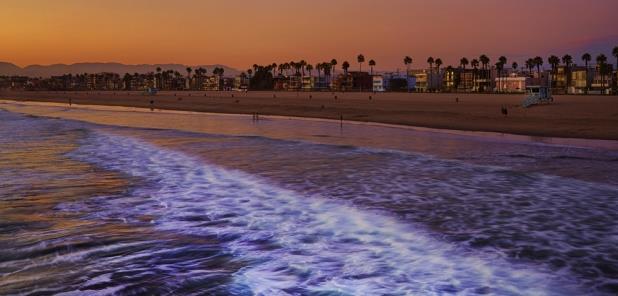
The Hardest Part of Dealing with Sea-Level Rise Will Be The Uncertainty. Vox explains: "By far one of the most important impacts of global warming in the decades ahead will be sea-level rise.
As the Earth heats up and ice sheets in Greenland and Antarctica melt,
ocean levels will creep upward, flooding coastal cities and forcing
large-scale relocations around the world. But there’s a troubling
asterisk here: We still don’t know exactly how high oceans are likely to
rise this century. Studies have suggested it could be anywhere from 2
to 6 feet, on average — with newer evidence leaning toward the higher end, depending on emissions and how quickly parts of West Antarctica’s massive ice sheet
disintegrate. Worse, climate scientists probably won’t be able to pin
down an exact number anytime soon, because getting a handle on ice-sheet
dynamics is inherently tricky..." (Photo credit: EPA).
Map credit: The Real Deal has a high-resolution version of the map showing condominiums at greatest risk in the Miami area.
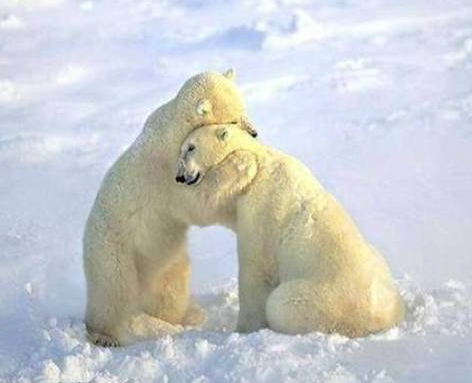
"The
local weather conditions people experience likely play a role in what
they think about the broader climate," says Utah State University
researcher Peter Howe. "Climate change is causing record-breaking heat
around the world, but the variability of the climate means that some
places are still reaching record-breaking cold. If you're living in a
place where there's been more record cold weather than record heat
lately, you may doubt reports of climate change."
Howe says people's beliefs about climate change are driven by many factors, but a new study in which he participated suggests weather events in your own backyard may be an important influence.
Read more at: http://phys.org/news/2016-12-lows-global-scientist.html#jCp
Howe says people's beliefs about climate change are driven by many factors, but a new study in which he participated suggests weather events in your own backyard may be an important influence.
Read more at: http://phys.org/news/2016-12-lows-global-scientist.html#jCp
Alaska Wildfires Linked to Climate Change. Here's the intro to a story at Alaska Public Media: "2015 was a headline grabbing year for extreme weather events. Massive floods, extreme drought and low snowpack were seen around the globe. In Alaska, wildfires scorched over 5 million acres of land. Now the National Oceanic and Atmospheric Administration (NOAA) is taking a closer look and trying to figure out what caused them. James Partain, a NOAA climatologist, said he can’t go anywhere without someone asking about climate change. His dentist, passengers on airline flights — he says they all want to know what’s triggering these unusual weather events around the state?..."
Photo credit: "Flames from the Funny River Wildfire flare up on May 24, 2016 in Soldotna, Alaska. The wildfire started unusually early in the season and burned nearly 200,000 acres on the Kenai Peninsula."(Photo by Rashah McChesney/Peninsula Clarion).
Can You Dig It? A Gardener Talks Climate Change. Who Better? Here's an excerpt of an Op-Ed at The Star Tribune: "...Unfortunately,
though, the best way to fix our polluted planet isn’t to monetize the
effort. Just as we need to take the money out of politics, so it is with
climate. Instead of inventing a product to solve a problem, it’s time
we focus on the problem first and how to prevent it. Gardeners can lead
the way. They already do, by choosing to spend their free time creating
backyard versions of balanced ecosystems that will become more than
pretty places to escape to. Home gardeners have long since given up on
chemical pesticides and fertilizers. They are way ahead of commercial
farmers. Their tiny plots serve as experiment stations and demonstration
sites. They answer questions for those curious enough to ask, such as:
Why is your backyard teeming with wildlife when all you did was plant
some flowers?..."
Illustration credit: Star Tribune.
Photo credit: "Gunstock ski area in Gilford, New Hampshire. Some ski resort execs in New England are seeking more reliable snowfall further north." Jim Cole / AP.
Graphic credit: "Global average surface temperature, 1979-2016."
No comments:
Post a Comment